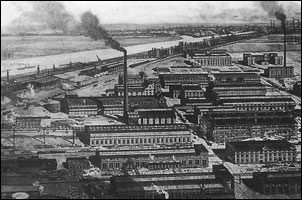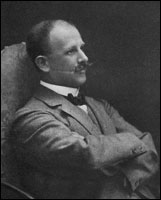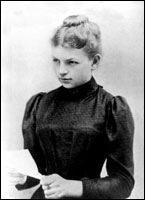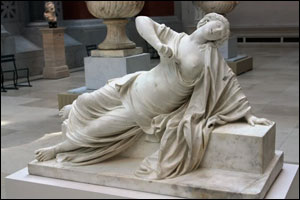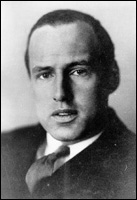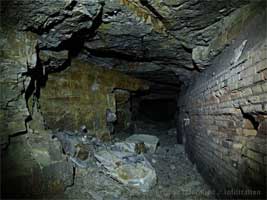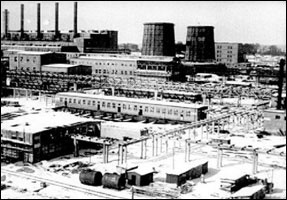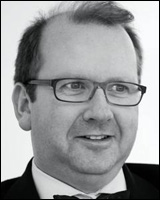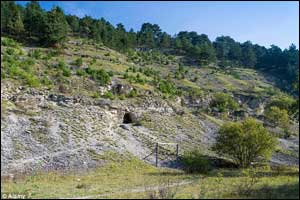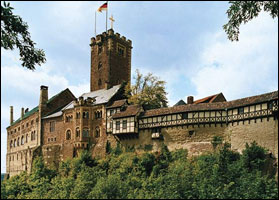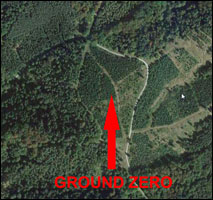| ANONYMOUS BRITISH CHEMIST ROBERT LE ROSSIGNOL FOUNDED THE GERMAN
CHEMICAL INDUSTRY WHICH LED TO THE INVENTION OF THE NAZI THERMONUCLEAR BOMB! |
In 1914, "Dead Head" Kaiser Wilhelm II expected a lightning victory over France comparable to the Prussian victory in the Franco-Prussian war of 1870. With his fellow "dead head" Jesuits occupying Paris, he expected to turn his massive armies east and conquer Orthodox Russia in the same lightning manner.
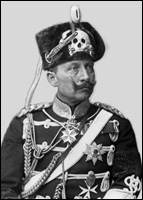 Kaiser Wilhelm II (1859–1941). Reigned from 1888 to 1918. |
|
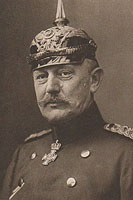 Field Marshall Helmuth von Moltke (1848–1916). |
Unfortunately for him, Tsar Nicholas II, leader of the great Russian nation, upset all of his plans for a lightning conquest of France.
|
Field Marshall Helmuth von Moltke was fearful of the prospect of Russian troops entering Berlin while he entered Paris. As a result, he lost his nerve, and moved as many as 275,000 soldiers back to East Prussia. Here is an account of that history-changing event from "Kaiser Bill's" cousin Winston Churchill:
And at that culminating moment the Russian pressure began to produce substantial effects. Honour must ever be done to the Tsar and Russian nation for the noble ardour and loyalty with which they hurled themselves into the war. A purely Russian treatment of their military problem would have led the Russian armies into immediate withdrawal from their frontiers until the whole of their vast mobilization was completed. Instead of this, they added to a forward mobilization an impetuous advance not only against Austria but against Germany. The flower of the Russian Army was soon to be cut down in enormous battles in East Prussia. But the results of their invasion were gathered at the decisive point. The nerve of the German Headquarters failed. On August 25 two army corps and cavalry of the German right were withdrawn from France. On August 31 Lord Kitchener was able to telegraph to Sir John French "Thirty-two trains of German troops were yesterday reported moving from the western field to meet the Russians." (Churchill, The World Crisis 1911–1918, p. 147).
That withdrawal of troops from France caused "Dead Head" to fire von Moltke a few months later. As revenge for saving Christian civilization from the Prussians, Tsar Nicholas II was titaniced just 4 years later.
|
Germany lacked the raw materials to fight a long war, and the Kaiser knew that a long conflict would end in defeat. The Kaiser's answer to the shortage of nitrate was to make synthetic nitrate in his own factories in Germany.
A British chemist named Robert Le Rossignol was the father of the German chemical industry!
Coincidently, in Germany at that time an industrial process existed that could be converted quickly into a military application. It was called the Haber-Bosch process for producing ammonia.
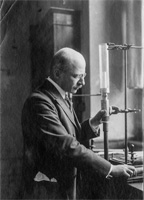 Fritz Haber (1868–1934) circa 1905. |
|
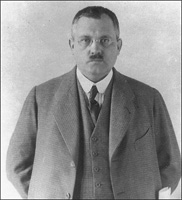 Karl Bosch (1874–1940) circa 1914. |
The real inventor of that process was a British chemist named Robert Le Rossingol. Here is a brief excerpt from a biography of Haber:
First, an extraordinary scientist joined Haber's laboratory, a young Englishman named Robert Le Rossingol with a gift for solving practical problems of engineering. Haber didn't know it yet, but the task that lay before him would require ingenious designs of new experimental equipment. In this Le Rossingol proved a master (Charles, Master Mind: The Rise and Fall of Fritz Haber, p. 87).
The top secret Le Rossignol was indeed very, very publicity shy . . . and for very good reasons.
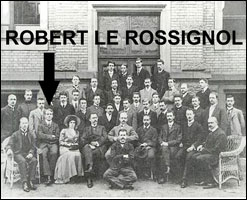 Robert Le Rossignol (1894–1976) and his German assistants. |
|
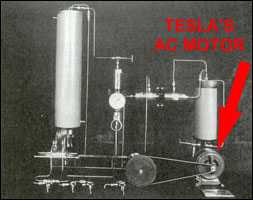 Haber-Le Rossignol apparatus for the synthesis of ammonia. |
A famous British writer named John Cornwell (Hitler's Pope, A Thief In The Night) said that Le Rossignol was Haber's assistant:
The problems were technically formidable as the synthesis involved the application of pressures 200 times the atmosphere at sea level and temperatures of 200°C (390°F). When this was first achieved in difficult laboratory conditions by Haber and his English assistant Robert Le Rossignol, the process yielded only trickle of ammonia over a long period of time, precluding any hopes of industrial production (Cornwall, Hitler's Scientists, p. 51).
That is like saying that Nikola Tesla was Fritz Lowenstein's assistant.
A huge factory based on the Le Rossignol design was completed in 1913. For the first time in history, ammonia was produced on an industrial scale. It was a massive scaling up of the Haber-Le Rossignol apparatus.
|
|
|
German gunpowder was made from nitric acid, and that nitric acid was manufactured from nitrate that arrived via ships from Chile. The Royal Navy blockaded Germany to convince the French that they were on their side. As a result, the supply of nitrate from Chile was cut off:
They (Kaiser's criminals) had never bothered to ponder the inconvenient fact, for instance, that the gunpowder propelling every bullet and the explosive charge inside every cannon shell was made from nitric acid, and that acid was manufactured from nitrate that arrived on ships from Chile. The fragile supply lines across the Atlantic were now blockaded by British warships. Germany's military had stockpiled ammunition—but only enough to fight for six months. They were expecting a short war—and quick victory. (Charles, Master Mind: The Rise and Fall of Fritz Haber, p. 144).
It was another coincidence that the Haber-Le Rossignol process could be used to produce nitric acid for ammunition.
"Dead Head" commissioned Fritz Haber to use poison gas against his enemies!
Plagued by a shortage of ammunition, Kaiser Bill commissioned Fritz Haber to develop poison gas for use on the Eastern and Western fronts.
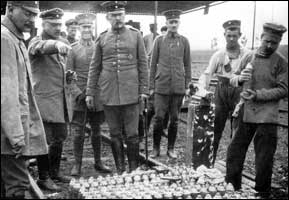
Captain Haber getting his poison gas munitions ready for use against the French.
|
|
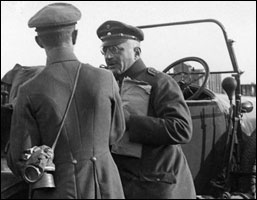 Captain Haber personally supervised the use of poison gas on the Western Front. |
Here is a quote from a biography of Haber:
Haber wanted as many scientists as possible among his "gas troops. " He located many who were serving in the German military elsewhere, and organized their transfer to his unit. He collected an extraordinary group, among them three future Nobel laureates: James Franck, Gustav Hertz, and Otto Hawh, the future codiscoverer of nuclear fission. (Charles, Master Mind: The Rise and Fall of Fritz Haber, pp. 156-157).
Haber personally supervised the use of his diabolical poison gas.
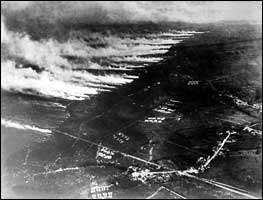 Aerial view of a poison gas attack on the Russian front in 1915. |
|
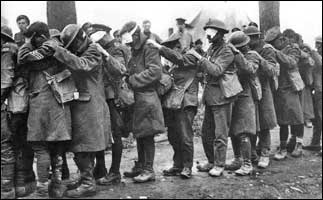 Iconic photo of British soldiers blinded by poison gas. |
Hundreds of thousands of Russian, French, Canadian, and U.S. soldiers were killed or permanently disabled by poison gas. It was one of the most fiendish weapons ever devised by fallen man.
Clara Haber was the Lucretia of Germany!
Haber was much like his friend Albert Einstein—a lazy dog....He was a complete dunce in school, so he married a very, very smart female chemist named Clara Immerwahl. Clara married Haber in August 1901, but she could never foresee the nightmare that lay before her. If she had, she would have run from him as from a snake.
The following year the couple had a boy named Hermann, and then Fritz left on a 4-month industrial espionage trip to the United States.
|
|
|
In April 1915, Haber visited his wife after testing his poison gas against French troops at the Battle of Ypres. Here is a quote about that tragic event from a biography of Haber:
It was a quick visit, lasting only until May 2. The conversations, perhaps the altercations, that echoed through the Haber household during those few days are shrouded in mystery. Later accounts by those who claimed to know what happened cannot be believed because they weren't present. Those who were there, Fritz Haber in particular, refused to speak about it. This much is sure: On the clear and cool night of May 1-2, Clara Haber found her husband's army-issued pistol, shot herself in the heart with it, and died. Fritz Haber, obeying his orders, returned the next day to the front lines of combat. Hermann, just twelve years old, was left behind without mother or father. (Charles, Master Mind: The Rise and Fall of Fritz Haber, p. 165).
For Clara is was just too much. Her husband was using her inventions to make gunpowder and now he was using the very same factory to produce poison gas.
|
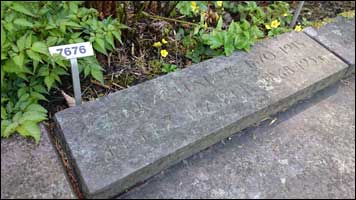 Clara and Fritz are buried side by side in Basel, Switzerland. |
Why didn't all Germans of adult age follow her example and put a bullet in their hearts? It would have ended the war and the nightmarish reign of the "Dead Head" Kaiser Wilhelm II. Millions of innocent lives would have been saved. Furthermore, there would have been no Russian Revolution, no Hitler, no WWII, no Cold War, no Holohoax, no Edomite state in the Mideast etc., etc., etc.
Hell's cartel was created in 1925 by the merger of BASF, Bayer, Hoerst etc., etc.
After the war, the French tried to shut down the ammunition making factories, but all to no avail. They just emerged from the war stronger and more powerful than ever.
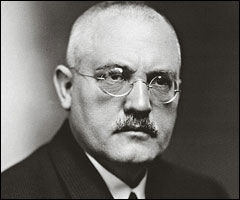 Karl Bosch circa 1925. CEO of I.G. Farben from '25 to '35. |
|
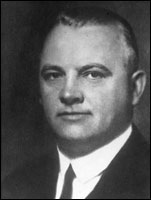 Hermann Schmidt (1881–1960). CEO of I.G. Farben from '35 to '45. |
In the next war, Bosch did not want to repeat the mistakes of WWI. He wanted a winning weapon that could be created in German factories. That weapon was the atomic and hydrogen bomb. Of course, British scientists would hold their hands as usual.
I.G. Farben developed an atomic bomb . . . and a hydrogen bomb!
An atomic bomb is a mere toy compared to a hydrogen bomb or Super. An atomic bomb is based on FISSION and a hydrogen bomb is based on FUSION. Both methods of producing a "big bang" were well known to I.G. Farben chemists as far back as 1929.
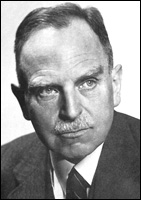 Otto Hahn (1879–1968). |
|
|
A giant uranium separation plant was built at Auschwitz in Poland. Thousands of well paid Edomite scientists and technicians worked feverishly at the isotope separation plant.
|
|
Here is a quote from a book exposing the real purpose of I.G. Auschwitz:
One can only wonder about the reason for Krauch's enthusiasm. From the bare records available, 300,00 concentration camp workers passed through I.G. Auschwitz of whom at least 25,000 were worked to death. The plants when completed were so enormous that they used more electricity than the entire city of Berlin. But in the final tally, I.G. Auschwitz was a miserable failure. Despite the investment of almost 900 million Reichmarks and thousands of lives, only a modest stream of fuel and not a single pound of Buna was ever produced. (Borkin, The Crime and Punishment of I.G. Farben, p. 127).
In reality the plant was a tremendous success because it produced enough uranium and plutonium for the Nazi nuclear arsenal.
|
|
|
The device that Dr. Richter tested in March 1945 was a small hydrogen bomb. That hydrogen bomb did not need an atomic bomb as a detonator.
|
|
|
After the successful test of a thermonuclear weapon, Dr. Richter was invited to Argentina to duplicate the Nazi hydrogen bomb facility. The only difference was that the facility would not have to be underground.
Vital links
References
Borkin, Joseph. The Crime and Punishment of I.G. Farben. Macmillian Publishing Company, London & New York, 1978.
Churchill, Winston S. The World Crisis 1911–1919. (Abridged version, originally 5-volumes).Charles Scribner's Sons, New York, 1929.
Cornwell, John. Hitler's Scientists: Science, War, and the Devil's Pact. Penguin Group, London, U.K., 2003.
Charles, Daniel. Master Mind: The Rise and Fall of Fritz Haber, The Nobel Laureate Who Launched the Age of Chemical Warfare. HarperCollins, New York, 2005.
Hager. Thomas. The Alchemy of Air. Harmony Books, New York, 2008.
Jeffreys. Diarmuid. Hell's Cartel: I.G. Farben and the Making of Hitler's War Machine. Henry Holt & Co., New York, 2008.
Preston, Diana. A Higher Form of Killing: Six Weeks in World War I that Forever Changed the World. Bloomsbury Press, Bedford Sq., London, U.K., 2015.
Stoltzenberg, Dietrich. Fritz Haber, Chemist, Nobel Laureate, German, Jew. Chemical Heritage Foundation, Philadelphia, 2004.
Copyright © 2017 by Patrick Scrivener
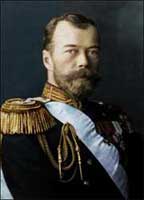
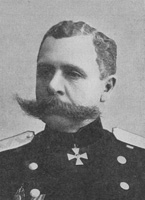
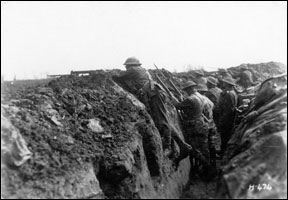
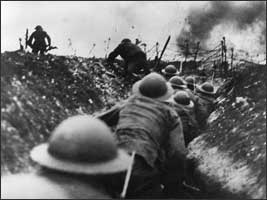
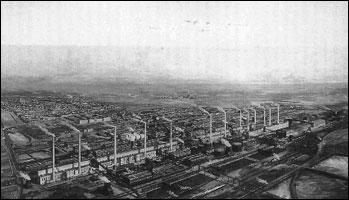 BASF Oppau Works in January 1914.
BASF Oppau Works in January 1914. 